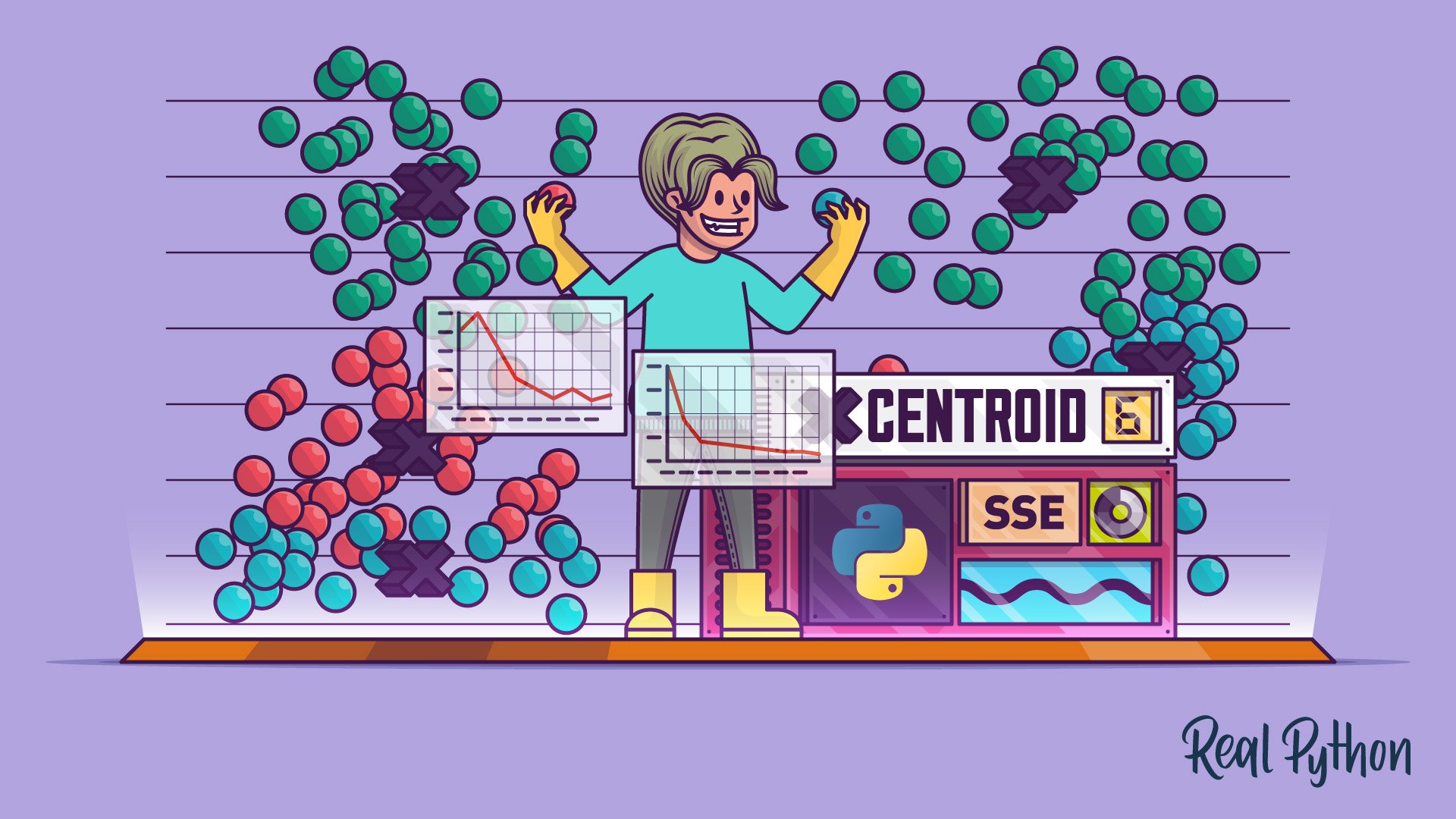The k-means clustering method is an unsupervised machine learning technique used to identify clusters of data objects in a dataset. There are many different types of clustering methods, but k-means is one of the oldest and most approachable. These traits make implementing k-means clustering in Python reasonably straightforward, even for novice programmers and data scientists.
If you’re interested in learning how and when to implement k-means clustering in Python, then this is the right place. You’ll walk through an end-to-end example of k-means clustering using Python, from preprocessing the data to evaluating results.
In this tutorial, you’ll learn:
- What k-means clustering is
- When to use k-means clustering to analyze your data
- How to implement k-means clustering in Python with scikit-learn
- How to select a meaningful number of clusters
Click the link below to download the code you’ll use to follow along with the examples in this tutorial and implement your own k-means clustering pipeline:
Download the sample code: Click here to get the code you’ll use to learn how to write a k-means clustering pipeline in this tutorial.
What Is Clustering?
Clustering is a set of techniques used to partition data into groups, or clusters. Clusters are loosely defined as groups of data objects that are more similar to other objects in their cluster than they are to data objects in other clusters. In practice, clustering helps identify two qualities of data:
- Meaningfulness
- Usefulness
Meaningful clusters expand domain knowledge. For example, in the medical field, researchers applied clustering to gene expression experiments. The clustering results identified groups of patients who respond differently to medical treatments.
Useful clusters, on the other hand, serve as an intermediate step in a data pipeline. For example, businesses use clustering for customer segmentation. The clustering results segment customers into groups with similar purchase histories, which businesses can then use to create targeted advertising campaigns.
Note: You’ll learn about unsupervised machine learning techniques in this tutorial. If you’re interested in learning more about supervised machine learning techniques, then check out Logistic Regression in Python.
There are many other applications of clustering, such as document clustering and social network analysis. These applications are relevant in nearly every industry, making clustering a valuable skill for professionals working with data in any field.
#a practical guide #python #k-means clustering
